Throughout the semester, I contributed to many different blogs and responded to some comments left on my own blog. I didn’t use Discord much; it seems that all of us were mainly able to troubleshoot on our own. Check out my Final Assigned Blog Post Video below showcasing the contributions I’ve made up until now, December 2nd!
Monthly Archives: December 2023
Goodbye Dining Room
If you’ve followed along from the beginning, you’ll know I tackled redesigning my ugly brown dining room for my learning project. Here’s how it started:
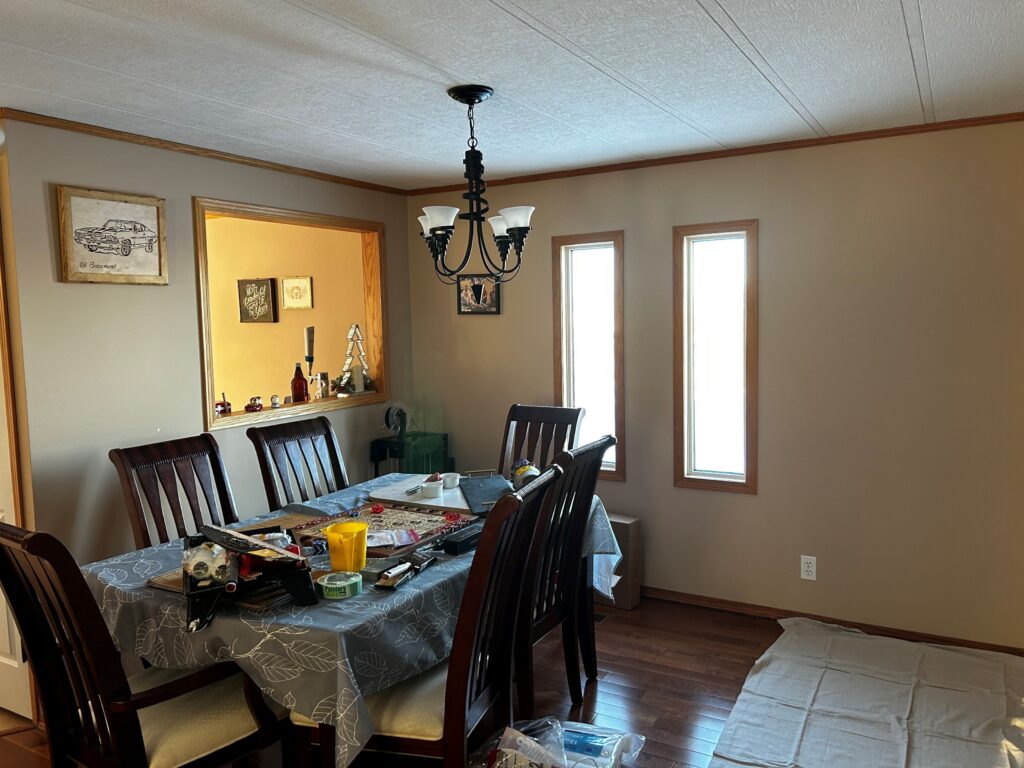
Post 1: He Can’t Say No, Right?
I started by showing you a couple of the projects I had already started in my home and shared my Pinterest Board for home decorating ideas.
Post 2: Anything But Brown
This week I was trying to decide paint colours and used the following resources:
- A blog about choosing paint colours that go with honey oak
- I accessed the Benjamin Moore and Sherwin Williams websites and perused paint colours
- I listened to a podcast on how to choose the right paint colours for your home
- And I also figured out how to create a poll on my blog
Post 3: Let There Be Light
This week I set up a free educators account on Canva in order to create a video. I learned how to save my video from Canva and then upload it to Youtube in order to share on my blog. I needed to watch this video to figure out how to limit my embarrassment so that only people in this class could watch my video.
I then discussed how Canva could be used following the SAMR model.
Post 4: I Did The Dang Thing, Now What?
This week I learned how to add giphs to my blog 🙂
I accessed the following resources:
- Watched this YouTube video on creating a gallery wall
- Checked out the Crate and Barrell website
- Looked at the following Pinterest Board
- Discussed the similarities between Pinterest and Save To Pocket
- And ordered photos from Mixtiles
Post 5: Ordering From Wayfair: Hit Or Miss?
This week I was figuring out all the details on area rugs.
- How to choose an area rug size:
- Wayfair
- Rug and Home
- Stone Gable: Refined Country Living
- Interior Design Tips: No.1 Rule for Dining Room Rug Sizes (this is the video I liked)
- Purchases from:
- I also learned how to use
Post 6: Reality TV Counts As Learning
This week I learned a lot from a TV platform called Tubi where I accessed one of my favourite home design shows called The Block.
I compared this series to some others that I found on Netflix, including Dream Home Makeover and Interior Design Masters.
Post 7: To Buffet, or Not to Buffet?
This week I epically failed at using SketchUp to create a design for my dining room. I resorted back to my failsafes of Pinterest and Wayfair to find inspiration. I also learned how to insert stock images into my blog this week.
Post 8: Using AI to Design My Dining Room
Had some more funny failures this week using AI.
The first thing I did was use Google to search for “AI generator for interior design.” The first website I clicked on was Apartment Therapy, which recommended these programs:
None of these gave me the results I was looking for, and I now get lots of extra junk mail…
Post 9: Add Light, Then Take It Away
I played around a bit more with the formatting on my blog and figured out how to have a picture and text side by side. I had some fun with giphs in this post which I think added a lot of interest. I used some references from Pinterest and showed the purchases I made from Amazon.
And this brings us to the end…
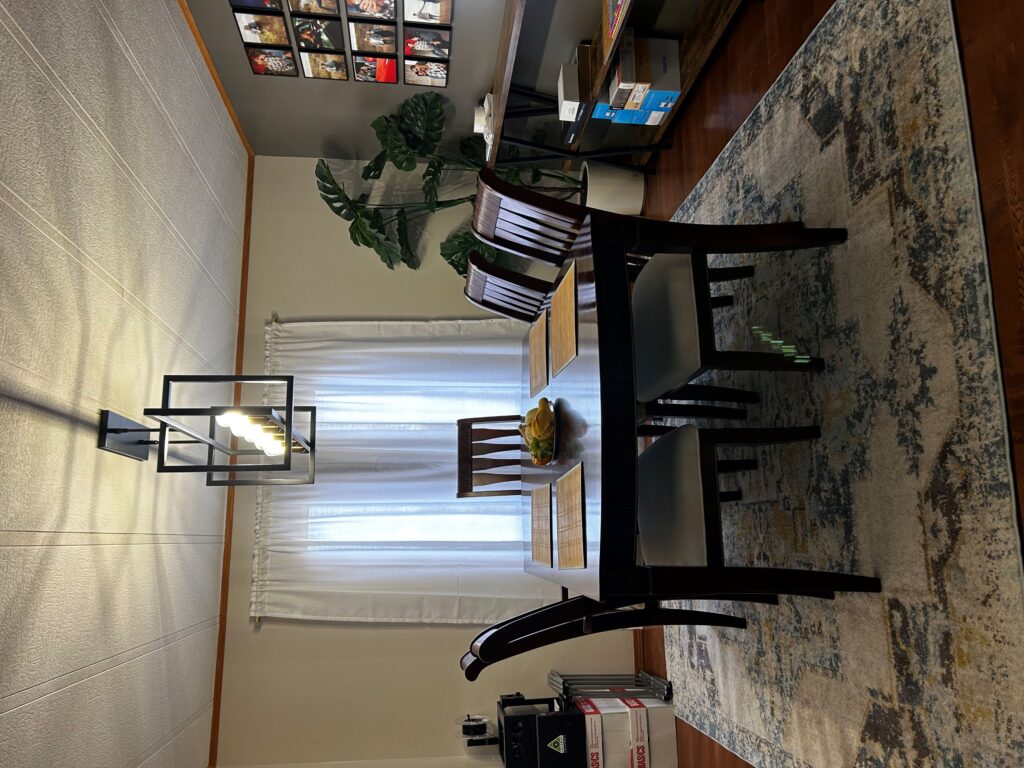
All I really have left to do with this space is tidy up and add Christmas decorations!
I learned about interior design through this project and gained more insight into how I like to learn digitally. For this particular project, I enjoyed more visual resources, like videos, compared to podcasts. Although, I realized that not all videos are created equally. I enjoyed blogging about my progress and finding ways within my blog to add interest and engagement, like using pictures, polls, gifs, videos, links, etc.
I wasn’t exactly sold with the idea of blogging as a way to show my learning, but after finishing this class I think this is actually something I would use with my students.
Thanks, EDTC 300; it’s been a slice!
That’s a Wrap!
Check out my summary of learning below! I’m not sure how you all felt creating your final project, but trying to fit everything we’ve learned into a short video was a real challenge for me. Enjoy!
Where’s the Magic?
As an administrator, I spend a lot of time providing feedback on short and long-term planning; I was very interested in learning more about Magic School and how it might help teachers in lesson/unit planning. I first tried out the unit planning feature and was pretty disappointed. I first tried a 15-day unit plan focusing on Science 7, Outcome IE7.3: Evaluate biogeochemical cycles (water, carbon, and nitrogen) as representations of energy flow and the cycling of matter through ecosystems. The planning was very short and insignificant and did not account for individual needs in the classroom or the adaptive dimension. There was also no mention of the specific outcome or indicators within the lesson.
Look at the first three days of the unit plan; what do you think?
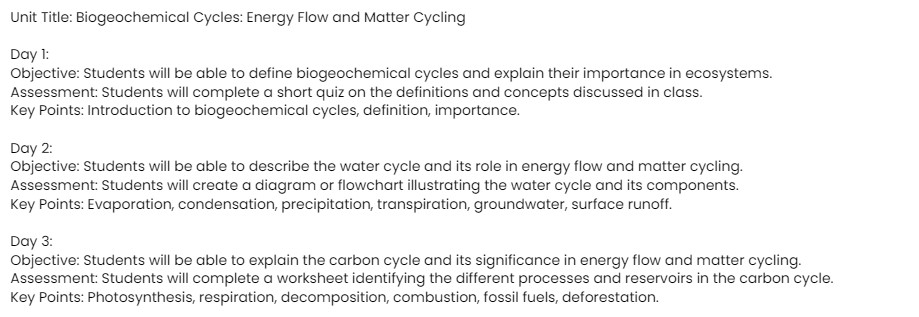
I decided to shorten the timeframe of the unit to 5 days to see if that made a difference in the level of planning.
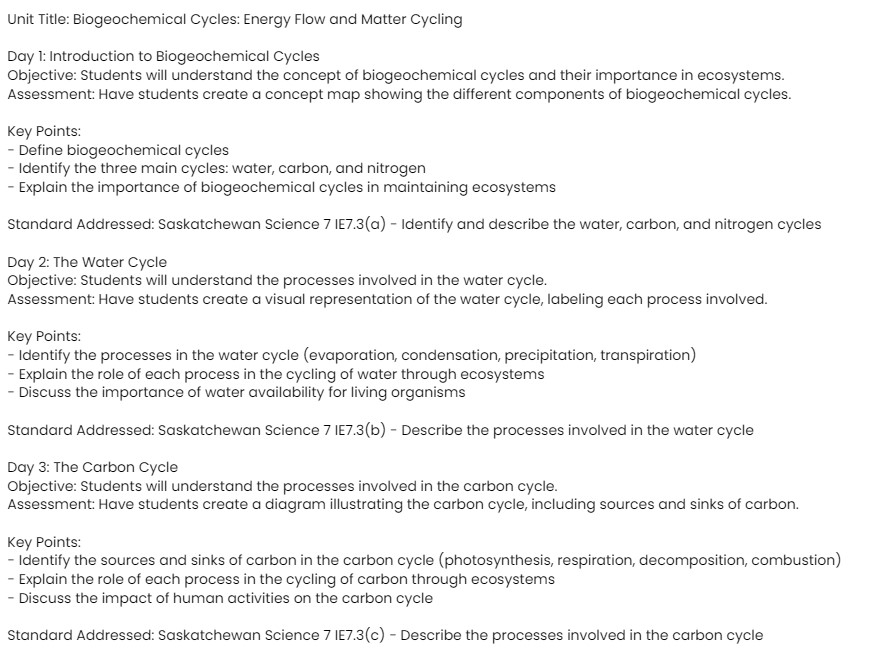
There is a difference in the level of planning this time. Outcomes and indicators are identified this time, and key points of the lesson have been included. However, a significant amount of information is still missing from what I would expect of a unit plan.
This tool would perhaps help create general ideas or a direction in which you might begin planning, but I would never use this tool alone to create a unit plan. What worries me about this tool and its use by new teachers is that they may not realize how much planning is missing. Educators are professionals and should know far better the planning level required in our increasingly complex classrooms. If a new teacher turned this planning in to me, it would warrant discussing their understanding of planning and assessment.
I then tried the lesson plan feature using the same outcome and found it much better.
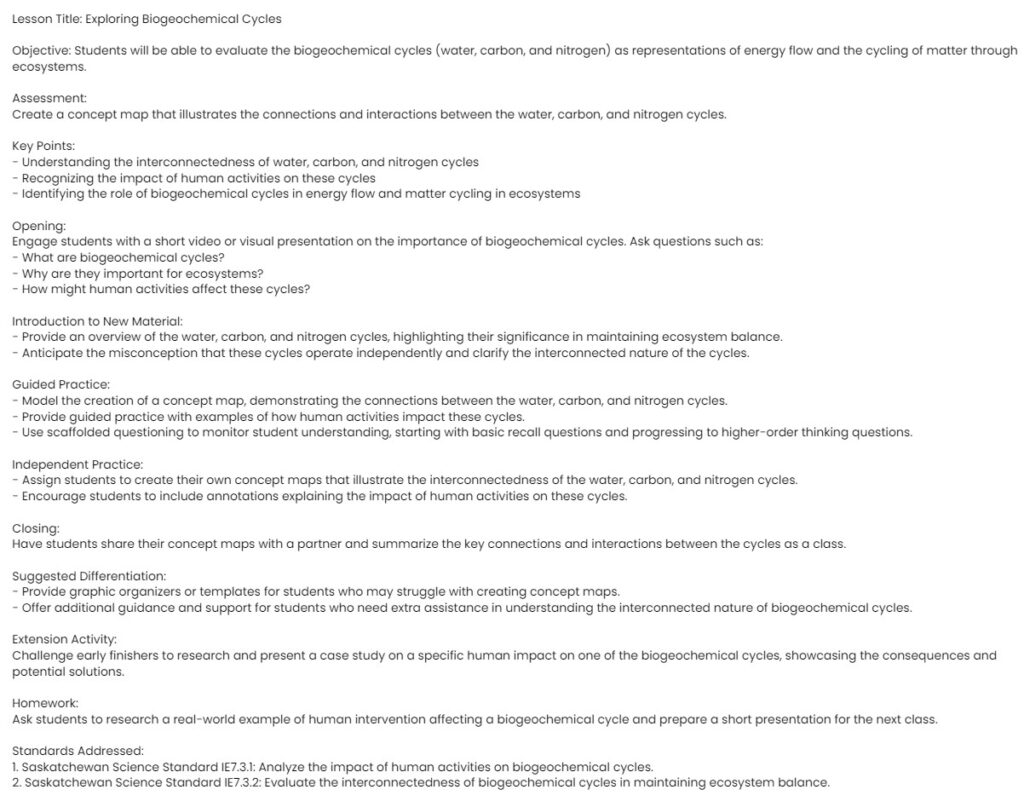
You can see a section for guided practice and suggested differentiation, which is a significant improvement. I do wish there were individually attached lesson plans when you create a unit plan, as these lesson plans, while still lacking in some areas, are a much more robust plan to build off.
I haven’t personally used AI in the classroom yet. I think I can see its value in editing; truthfully, I loved using it to draft emails to parents, give feedback to teachers, etc. I am nervous about introducing it to my students as I don’t think I’m currently prepared to adjust my assignments. As shown in class, there are ways to form prompts that would generate original content and allow for AI editing; however, it would just take time to go through your syllabus and adjust assignments as needed–and it seems that time is something all teachers are lacking right now.
Like it or not, AI is definitely here to stay. Each teacher must work towards learning and identifying their comfort level with its use personally, professionally, and in the classroom.
